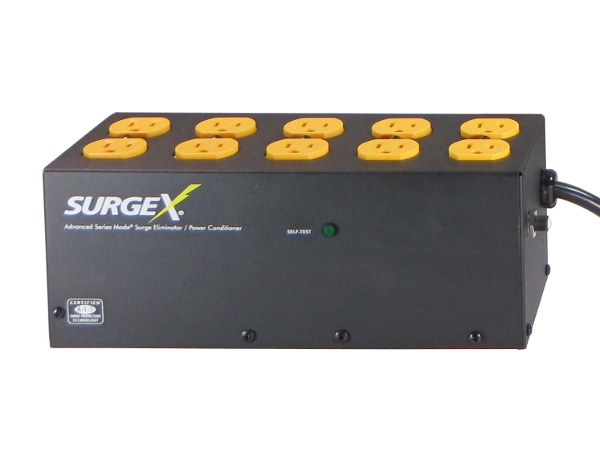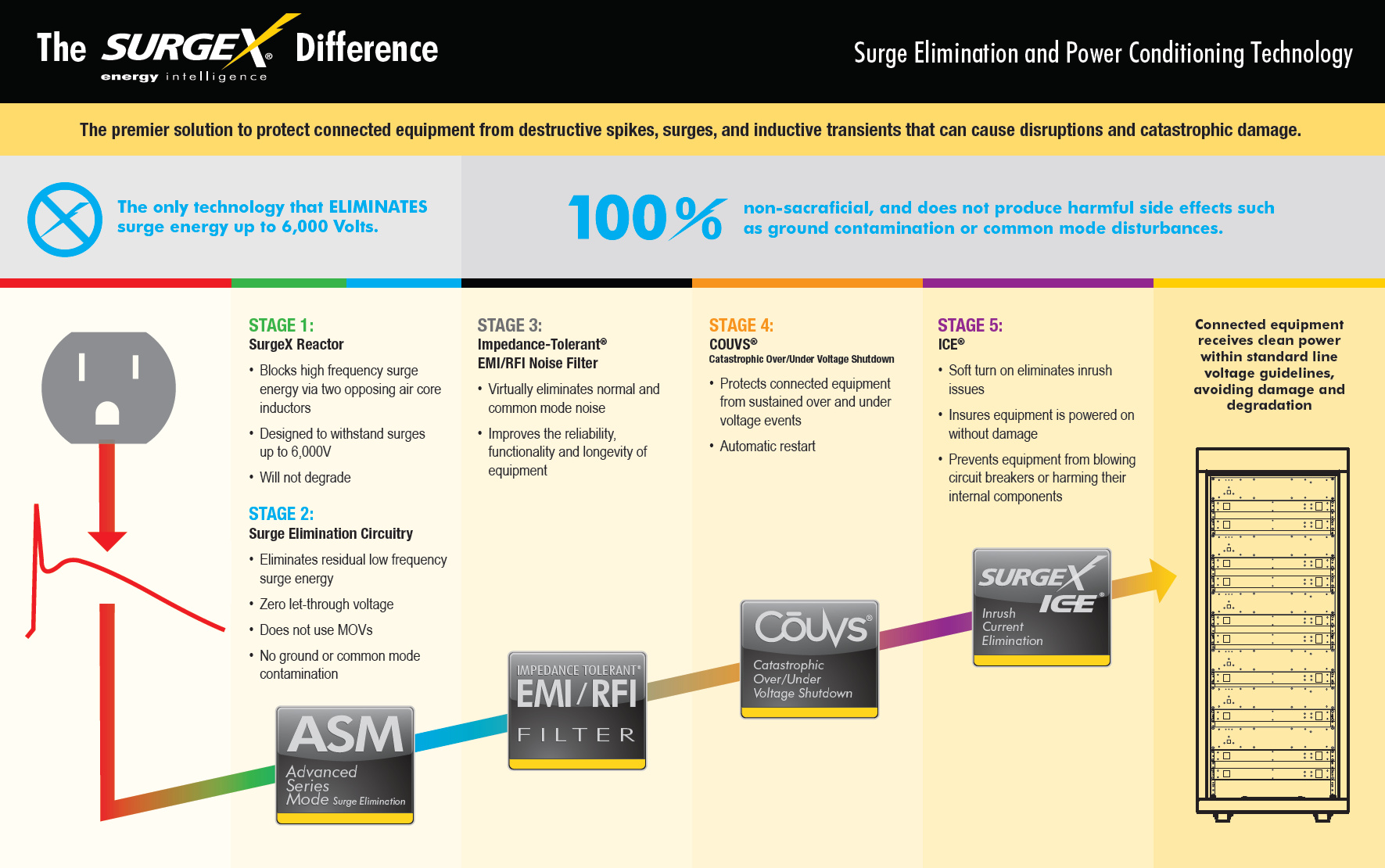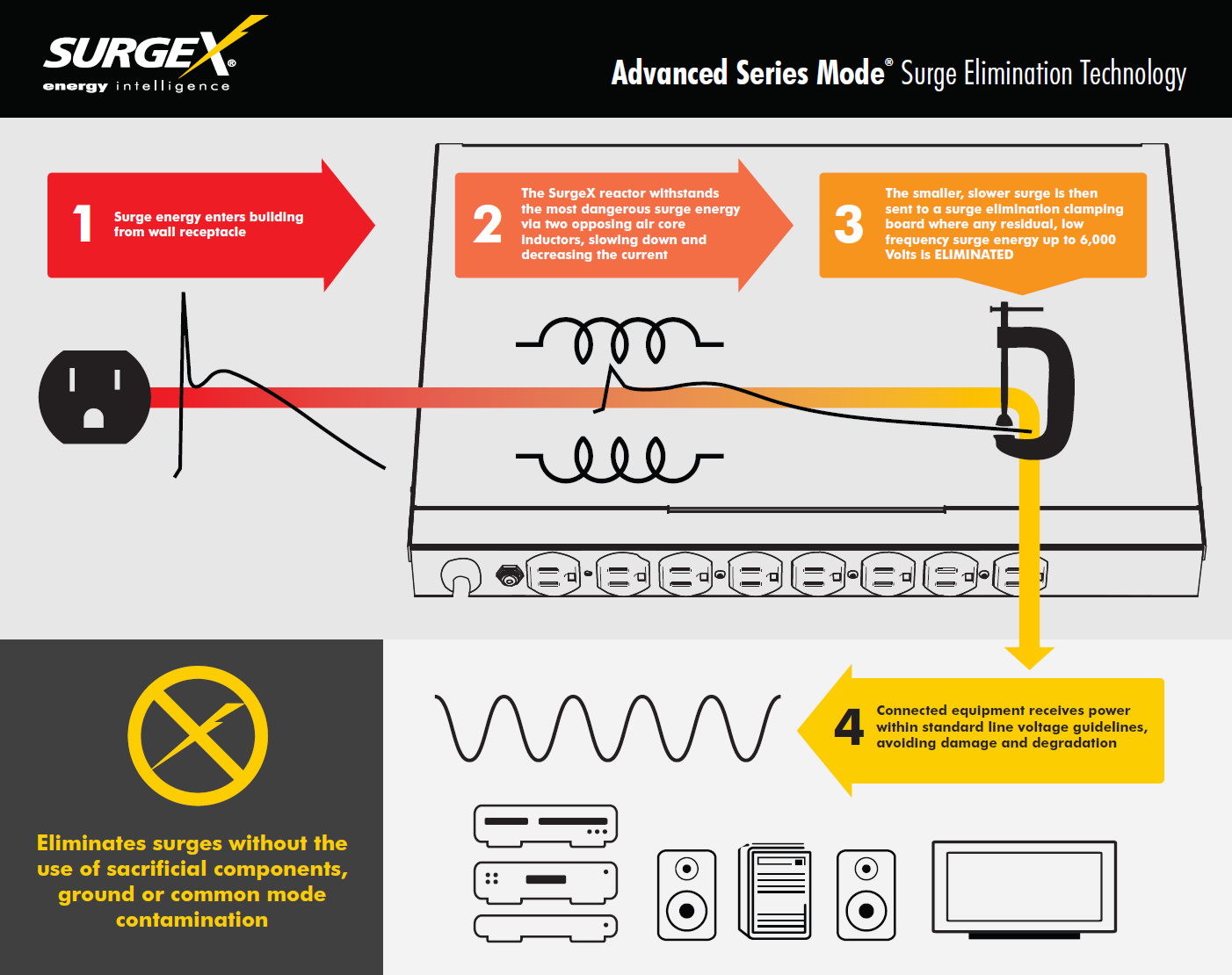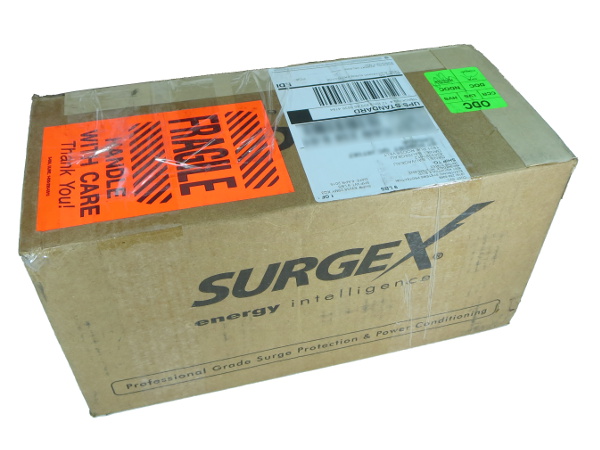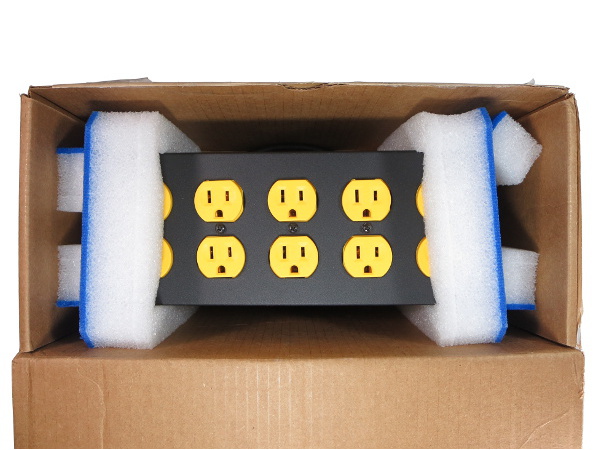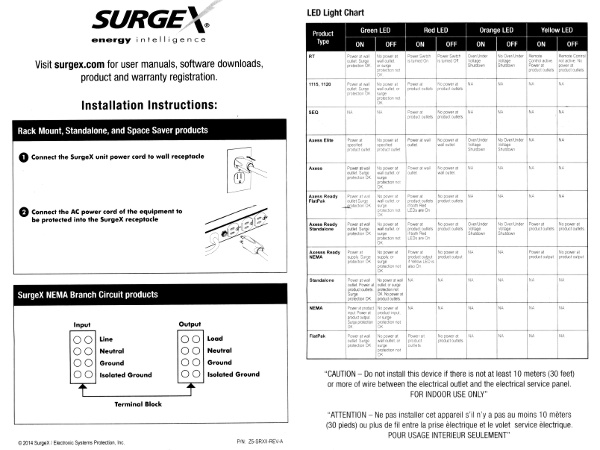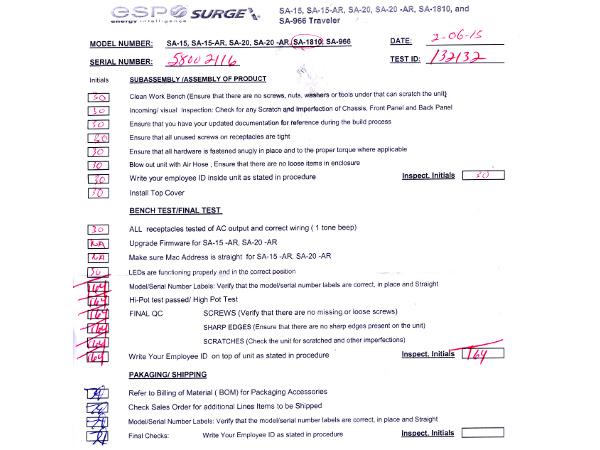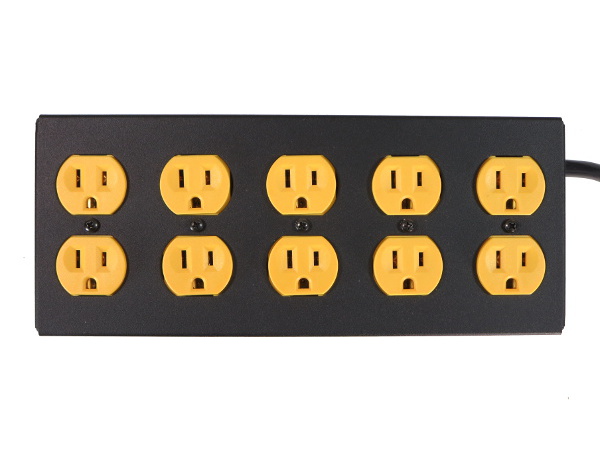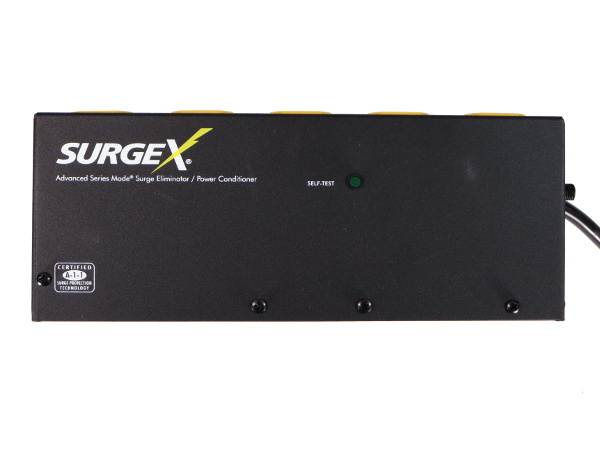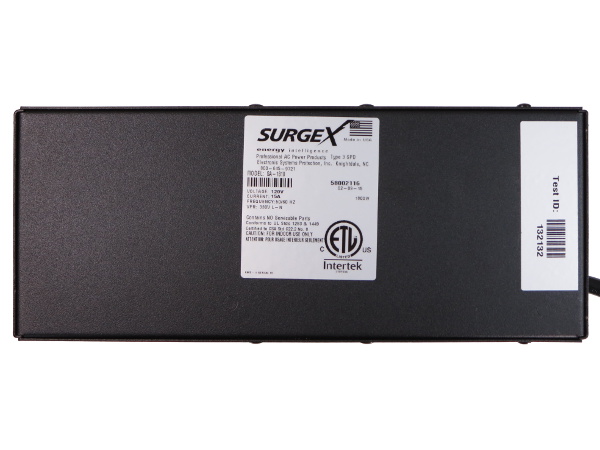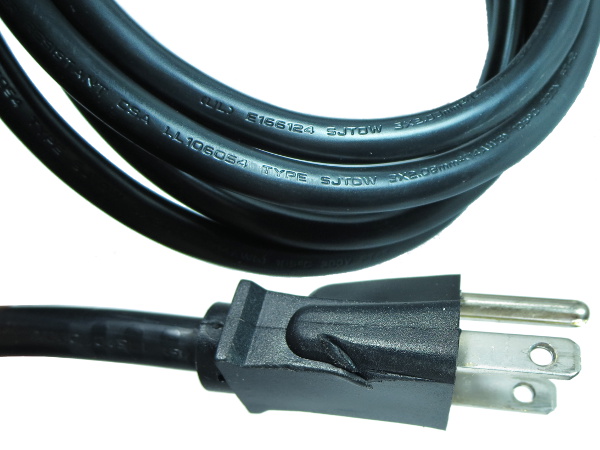SurgeX SA-1810 Tear-Down
About Today's Catch
Some of you asked for a professional-grade surge protector tear-down when I started taking these apart nearly a year ago. Well, that time has come.
I poked a handful of manufacturers back in February to see if any might be interested in sending samples, got a bite from Electronic Systems Protection, received its SA-1810 in April and now we get to go in for a tour. The SA-1810 is ESP/SurgeX's entry-level offering with the most built-in outlets.
If the brand name sounds unfamiliar to you, you may be shocked by its $400 street price and be curious to find out why it is so expensive compared to typical surge suppressors.
For people who have no idea who ESP is, the company originally started doing power conditioning for office equipment in 1985 when power quality issues were causing abnormally high service call frequency on the first generations of electronic copiers and other equipment. As for SurgeX, the company started in 1995 by introducing the concept of series-mode protection using non-sacrificial surge clamping components, which are still the two main features it's known for today. ESP bought SurgeX in 2010, so I'll be using SurgeX, ESP and ESP/SurgeX interchangeably.
SurgeX Technology Overview
The full SurgeX solution is divided into five stages; its SA-1810 implements only the first three, which also happen to be the most important under normal circumstances. Those are:
- the SurgeX reactor, intended to block high-frequency surge components
- the surge elimination circuitry, which replaces the MOVs from regular surge protectors
- the EMI filter
From this, we can expect the insides to be partitioned in three functional sections in one way or another. On the infographic, stages one and two together form SurgeX's Advanced Series Mode (ASM) protection.
The two functions not included are the Catastrophic Over/Under-Voltage Shutdown (COUVS) protection, which disconnects everything in case of an abnormal voltage condition, and Inrush Current Elimination (ICE), which sequentially turns outlets on via inrush-limiting elements to mitigate inrush current.
Get Tom's Hardware's best news and in-depth reviews, straight to your inbox.
The SurgeX Claim To Fame
A quick glance at this other SurgeX infographic highlights the following three key points:
- the series nature of the primary protection
- the non-sacrificial nature of the protection's design
- the non-contamination of the ground voltage
The first two have already been hinted at earlier, while the third simply means that the protection scheme does not involve the ground wire. We will get to what these translate to in terms of hardware later when the lid pops. For now, onward to the exterior tour.
Packaging
To paraphrase: good things come in inconspicuous packages. There's no fancy marketing here, not even a model number. Just the SurgeX brand name and company motto. People who order SurgeX units simply do not need to be reminded why they are doing so by colorful or wordy packaging. They already know, buy it based on recommendations without caring about cost or are obeying a procurement requirement.
A “fragile” power strip? Hm.
Inside The Box
ESP does not chance its unit getting mangled during shipping. About three centimeters of stiff foam pad the unit away from its light corrugated cardboard box on every side at both ends. This makes me wonder what the “Fragile” sticker was about.
Instructables
How difficult can setting up a SurgeX unit be? About as difficult as plugging in any other surge protector: plug it into a power outlet, then plug in your devices. The LED chart on the back of this 8.5x5.5” sheet may seem intimidating until you realize it covers 11 different product lines, one product per row. In the case of this “Standalone” product, the only LED is green, and a light means there is power and the protection is working. When it's off, there is either no power or the protection failed.
Checking Out
Traceability is always nice to have, especially on premium and potentially mission-critical products. The assembly and test slip included with the unit I received indicates that at least three people directly handled the unit. Based on the slip date, it appears this unit was assembled and presumably tested a few days before my first attempt to contact SurgeX.
Foam blocks, the unit itself, the instructions half-sheet and the checklist. That is it for package contents. To be fair, I doubt many people really care for more than that anyway.
Outlets, Outlets And More Outlets
Ten yellowish-orange outlets adorn the SA-1810's top, leaving no space for anything else. These should hopefully be enough to accommodate most peoples' accessories.
Up-Front
There are no attempts at fancy or flashy design on the panels either. The sides are bare apart from the branding, Advanced Series Mode surge suppression and power conditioning key features, self-test light-emitting diode and the “A-1-1 Certified” mark in the bottom-left corner of the front panel.
Bottom-Up
The bottom cover features a product identification and specifications label, along with a “Test ID” that refers to the assembly and test checklist. Along the perimeter, we can see that the enclosure is made from folded sheet metal, with the bottom tray screwed into from the sides.
Plug And Cord
ESP does not try doing anything fancy with its plug, favoring an off-the-shelf 3x2.08mm2 (or 14/3) PVC jacket cable with straight plug-style rated for 15A and 300V. Personally, I prefer flush-type plugs.
It looks like the molded plug got gouged, though I could not find any protruding or sharp edge on the enclosure to explain how. The shipping box also lacks any holes or impact marks. I am inclined to believe it got damaged prior to shipping and slipped through QA.
-
Evil_Overlord Thank you for this write-up. In my eyes, this article is a shining example of what (technical) journalism should be. It is both worthy of being used as a product review, and reference guide. If I were going shopping for a series-mode surge suppressor, or if I knew someone who was shopping for a power protection solution for power-sensitive equipment, I would -without pause- recommend using this article as a launching pad for any/all research.Reply
Two things in this article stand out and gave me a reason to write this comment. First: You didn't give up. When faced with equipment that could not perform all the tests you desired, you switched to a simulated circuit. That takes time, research, and effort. Second: You openly admitted the transition from real-world to simulation. Lesser authors might skipped that disclaimer.
Well done. -
mortsmi7 They go to all the trouble of making such a beefy product and then they back-stab the outlets. The cross-section of a stab connection is very low compared to a screw-type. A space heater, which applies a constant high amperage, will kill a back-stabbed outlet in no time.Reply -
Daniel Sauvageau Reply
They make models for just about every country, you just need to go through surgexinternational.com to pick your country. All they need to do is put the appropriate cord and transformer/reactor in, increase the bleeder resistors' value for 220-240V countries and that's probably it*.16422851 said:Interesting , do they have a European version of this ?
Edit: *and put 400-450V electrolytic input caps in instead of 250V since 240V crests near 350V.
Thanks.16423853 said:Thank you for this write-up.
Two things in this article stand out and gave me a reason to write this comment. First: You didn't give up. When faced with equipment that could not perform all the tests you desired, you switched to a simulated circuit. That takes time, research, and effort. Second: You openly admitted the transition from real-world to simulation. Lesser authors might skipped that disclaimer.
Well done.
I had already done a fair chunk of the simulation research almost a year ago after getting into an argument with some readers about SurgeX and similar products, so I was basically biting my time to do something with the results and what I learned during that process.
As for admitting to using simulated results, this simply requires a lot less effort than producing convincing fake results. The main reason I do it though is as a shout-out to test equipment manufacturers: "if you had sponsored me with test equipment relevant to this story, your gear would have probably been shown or at least mentioned here." -
Daniel Sauvageau Reply
These are not "stab" connection with the crappy leaf-springs snaring wires. They are captive nut connections: the wire gets secured between the captive nut (a piece of cast metal with a tapped hole the terminal screw screws into and grooves to guide the solid copper wires) and screw/terminal by tightening the screw.16424079 said:The cross-section of a stab connection is very low compared to a screw-type. A space heater, which applies a constant high amperage, will kill a back-stabbed outlet in no time.
As far as current-passing capacity, those captive slab types should be every bit as good as plain screw terminals: they are basically the same except that instead of the wire being squeezed directly between the screw and outlet metal strip where you need to wrap the wire around the screw just so it does not slip out from under the screw while tightening, the wire is squeezed between the captive slug and the metal strip with the groove guiding the wire in place, eliminating the need to wrap the wire around the screw. These same grooves might actually provide more total contact area with the wire than the screw head does. -
blackmagnum Thanks Daniel for the tips. When using $1k plus computer equipment at work or home, it has been proven that you should play safe with reputable power delivery than be cheap and sorry.Reply
